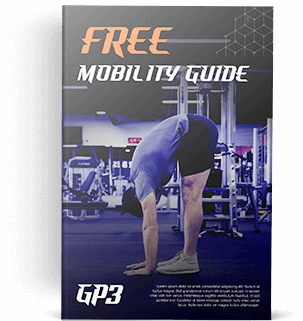Key Points:
1. Hunger does not need to control you.
2. You can learn the skill of mastering hunger.
3. Like any skill, this takes practice, and may be difficult at first.
Estimated Reading Time: 3-6 Minutes
Today we’re going to talk about what may be the most important skill for achieving your nutrition-related goals, particularly if these goals involve reducing body fat. This skill is mastering hunger, rather than letting it control you.
Sound impossible? Well, consider this…
Hunger is an Animalistic Urge
When was the last time you were in public and felt the sensation of needing to go to the bathroom but did not wait until you were, you know, in a bathroom? In the same vein, when was the last time you were upset with a coworker and decided to just punch them in the face? Finally, when was the last time you felt tired at work and immediately took a nap on the job?
My guess is that you don’t do these things very often. I’d venture to say that, as a functioning adult in a modern society, you have fully mastered all three of those “animalistic” urges. And that’s exactly what they are. Going to the bathroom the second you feel the need to, reacting with physical violence when upset, and falling asleep whenever and wherever you feel tired are all behaviors we expect from animals or very young children. We don’t do those things past a certain age.
Guess what? Hunger is in the exact same category. The difference is, society never expects us to master hunger in the same way. Many people never learn to see hunger as anything other than an emergency that needs to be acted upon immediately. Sure, if we’re stuck in a meeting and hunger strikes, we know better than to step out and head straight for the cafeteria, but the point stands.
In the moment of experiencing hunger, we often don’t remember that our bodies can easily survive for days, even weeks, without food, especially when we’re well hydrated. While I’m not advocating for that by any means, it does serve as an important reminder that when we first feel hungry, the perceived need for food is not physiological, but psychological. In other words, we think we need food, when that may not be true.
So, what’s the point of all this?
Well, it’s to learn to master your own mild to moderate hunger urges. To learn that you decide when to act on hunger. Hunger doesn’t decide when you drop everything and start eating. You do. So, here are a couple experiments you can try in order to prove this to yourself.
Experiment #1: Next time you feel hungry, set a 45 minute timer.
As soon as you set the timer, drink a large glass of water and start working on something you need to do. We both know there’s something you’ve been putting off! Once the 45 minutes are up, assess how your hunger levels have changed. Are they the same, stronger, or weaker? Repeat this once a day for 10 days and see which patterns you notice. You might find that after 45 minutes, the hunger is weaker, or even gone entirely. This is because hunger ebbs and flows throughout the day. It doesn’t increase in a linear fashion. That means there’s a lot of power in waiting hunger out to see if it goes away.
This is doubly important because we often mistake feelings of boredom, stress, restlessness, and even dehydration for hunger. This experiment can help you discover the difference. Then, next time you feel mildly hungry, you can ask yourself, “Am I truly hungry, or is it something else?” Ultimately, this experiment can help you develop the skill of not eating when you don’t actually need to or want to.
Experiment #2: While you’re eating, once you feel about 75% full, stop.
Then, set a timer for 20 minutes. If after 20 minutes you’re still hungry, you can keep eating. If you’re not still hungry, you’re done with that meal. Try this at one meal per day for 10 days and see what you discover. This experiment can keep you from eating until you’re overstuffed.
Experiment #3: At the start of a meal, set a 20-minute timer. Then, take one bite every 30 seconds.
The beauty of this experiment is that it lets your natural signals of fullness and satiety kick in. You may have heard that it takes 20 minutes for the brain to realize the body has been fed. Well, it’s true. With this experiment, you’re practicing eating slowly and mindfully, rather than letting the animalistic hunger urge force you to wolf down your food without enjoying it.
These take repeated practice to become habits.
I’ll be totally transparent; all three of these experiments can help with things I’ve struggled with in the past, and sometimes still do. In particular, when I was younger, I often didn’t feel like a meal was done unless I was stuffed. The problem is, the body doesn’t need to be “stuffed.” And if you’re eating until it is, it’s very likely that you’re consistently eating more than your body needs. So, give these experiments a try.
Then, next time you feel hungry, you can do one of two things. You can eat if you truly need to, or you can say to your body, “Chill, we can wait.” Either way, you’ll be the one making this decision, not your feelings of hunger.
Before you go, I’d love to hear from you! Let me know…have you ever tried experiments like these three? If so, how’d they work for you. If not, do you have any questions about how or why they work?

